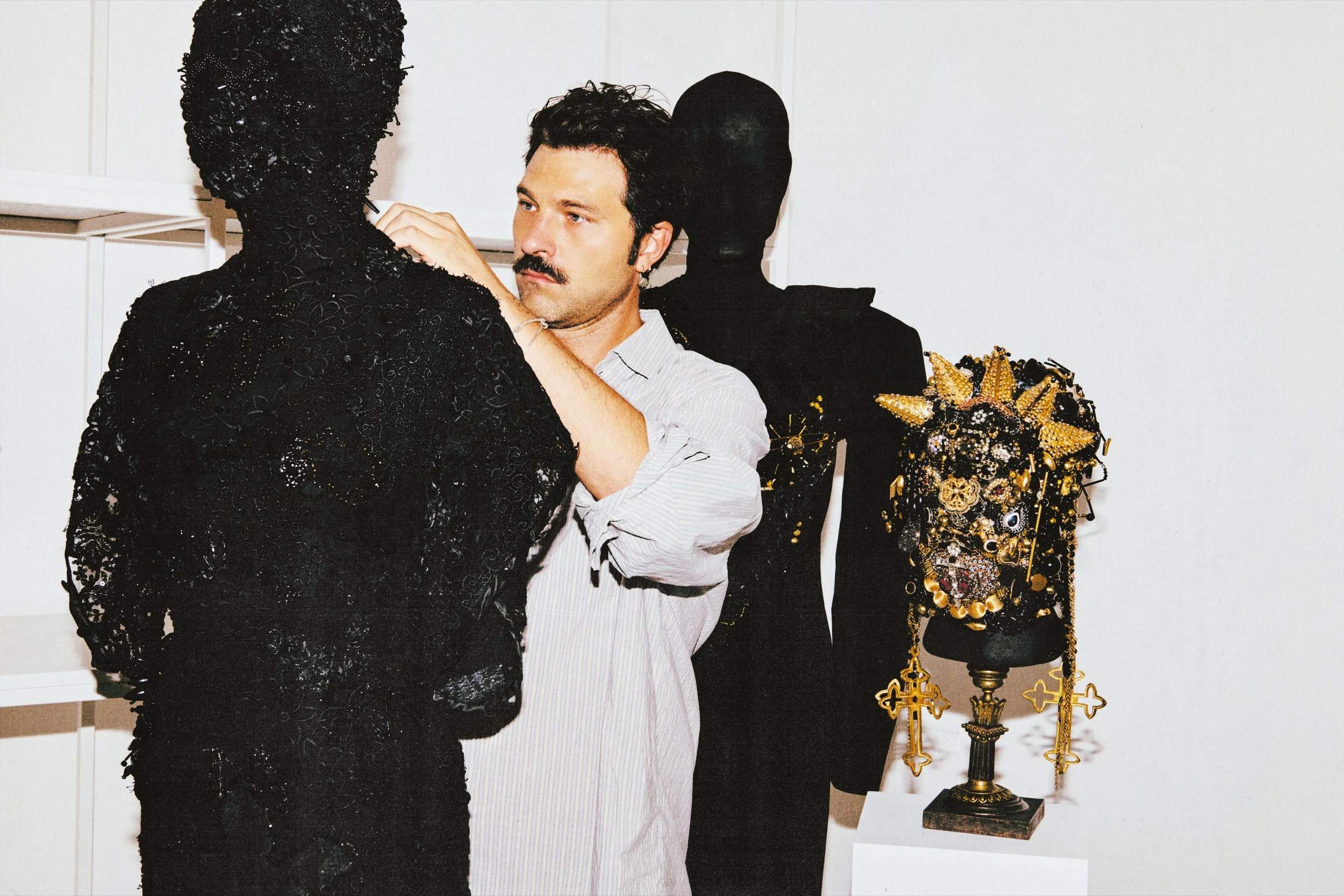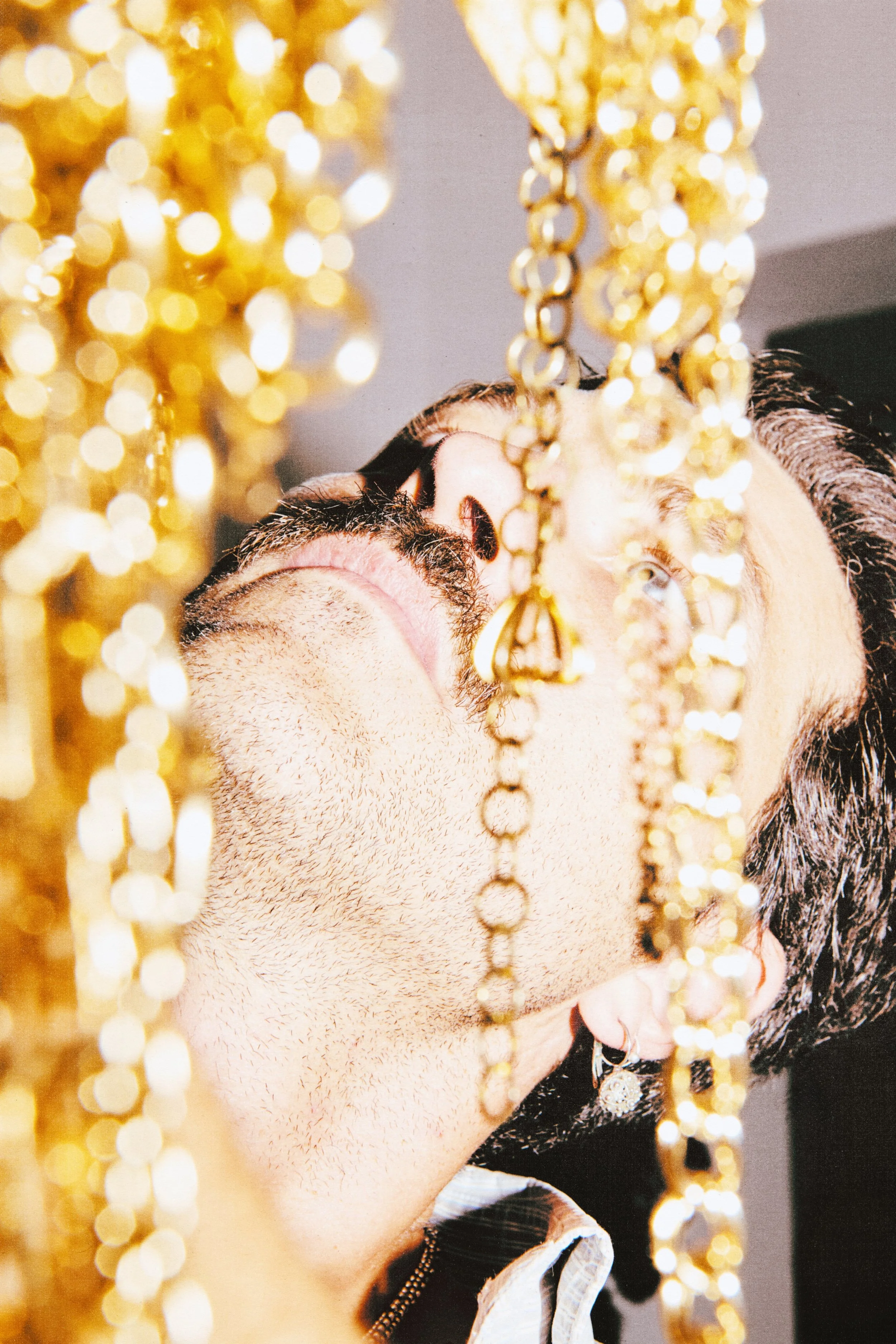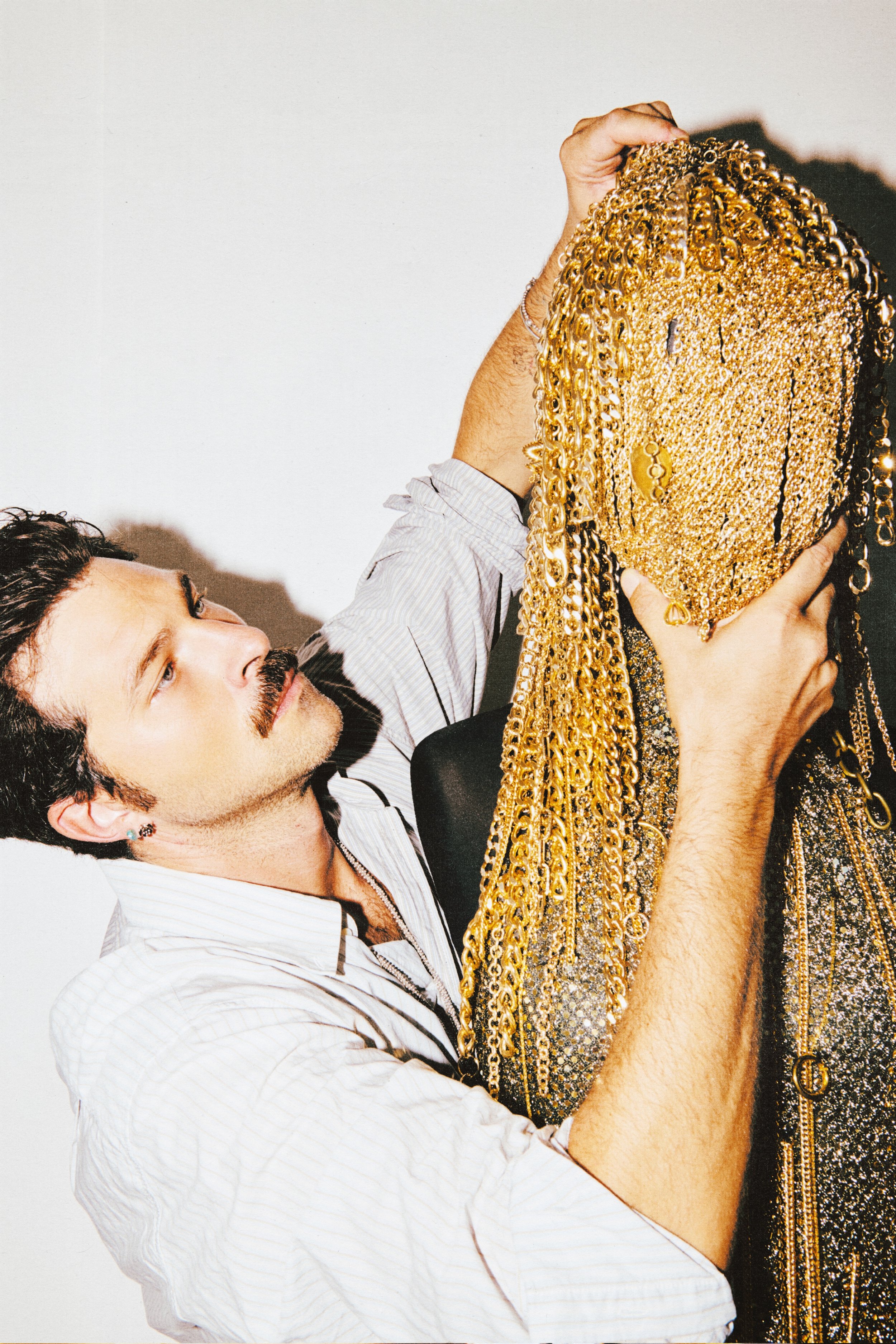THE FACES WE WEAR
Oona Chanel sits down with Francesco Casarotto — Creative Director of AGGLOMERATI
There are fashion houses built on craft, others on image, and then there are worlds—entire psychological terrains—clothed in fabric and ritual. Agglomerati, the universe conceived by Italian creative director Francesco Casarotto, does not dress the body so much as it reveals the architecture of the mind. What began unexpectedly in therapy evolved into a study of identity, shadow, memory, and the masks human beings construct as a form of survival.
Each piece—part sculpture, part garment, part apparition—poses a question that is almost forensic in its intimacy: Who is truly in control—the wearer, or the emotion that wears them? Where many brands build fantasy to escape reality, Agglomerati turns inward. The masks are not veils, but confrontations—faces of fear, longing, ego, tenderness, rage, and remembrance. If fashion is a language, Agglomerati is its subconscious: raw, poetic, unfiltered.
I travelled to Milan to meet Casarotto—an Italian designer whose work examines the emotional terrain of the human psyche through mask, sculpture, and silhouette. In his world, fashion becomes psychological archaeology: an excavation of hidden voices, quiet wounds, old ghosts, and ancient armor. This is not a brand; it is a reckoning.
Before our conversation began, I wrote in my notes: “Fashion often asks who we want to become. Agglomerati asks who we already are—and which face we are finally ready to meet.” That, I realize now, is the heart of his work.
Origins & Identity
OONA — What was the first spark behind Agglomerati—rebellion, preservation, or self-expression?
FRANCESCO CASAROTTO — Agglomerati was born about five years ago during conversations with my psychologist. In those sessions, we tried to identify the voices that crowd the mind—friendly ones that try to protect you, and destructive ones born from trauma, fear, and anxiety. My therapist asked me to name them, imagine them, draw them. I gathered leftover materials I had at home and began to agglomerate them into faces. That’s how the first masks emerged—each a character tied to an emotion: Fear, Anger, Compassion, Narcissism. They are not disguises, but the true faces of those voices—mirrors of the inner world.
OONA — If Agglomerati were a person, who would it be—a warrior, a poet, a ghost, or a mirror?
FC — A mirror. Always a mirror. Even when we think we are fighting an enemy outside ourselves, the conflict is internal. Agglomerati reflects that.
OONA — Fashion creates mythologies. What is the myth of Agglomerati?
FC — That identity is plural. We are never one face, one feeling, one story. We are an agglomeration.
The Masks
OONA — Masks can hide or reveal. In Agglomerati, what do they stand for—protection, performance, or truth?
FC — Truth. We are conditioned to see masks as a way to erase identity. But in Agglomerati, it’s the opposite. The human becomes the vessel that allows the mask to live. These faces are truths we avoid—uncomfortable, but necessary.
OONA — And in an age of constant exposure?
FC — Covering the face becomes the most vulnerable act of all.
Material & Form
OONA — Do materials carry emotional frequency for you?
FC — Absolutely. Material is the first emotional trigger. Each mask requires researching, sourcing, and stabilizing a single material. The process is almost archaeological. When the faces were born, I understood they needed bodies—costumes that constrain, liberate, or transform the human form. But the hierarchy is clear: the mask leads, the garment follows.
OONA — What role does absence—the void, the negative space—play in your work?
FC — Absence is tension. It’s the space where imagination finishes the sentence.
Time & Memory
OONA — Your name references stone and permanence, yet fashion is ephemeral. Do you design against time or with it?
FC — With it. I’m fascinated by deterioration. Time gives objects a second life—not better or worse, just different. Clothing holds memory and intimacy. When it frays, the story continues.
Responsibility & Ritual
OONA — What responsibility does fashion hold today—to the body, the planet, or the collective psyche?
FC — Fashion has always held responsibility. It has sparked revolutions—from Mary Quant’s miniskirt to Armani’s jacket to Katharine Hamnett’s protest tees. Clothing is identity, belonging, and activism. I see fashion as ritual: what we wear shapes how we stand, how we move, and how we exist in relation to others.
OONA — Can fashion hold vibration—a state of being?
FC — Yes. We feel before we think. Clothing is frequency.
The human becomes the vessel. The mask is the truth
Credits:
Photographer: Stefano Facca @stefano.facca
Brand: AGGLOMERATI @agglomerati_
Creative Director: Francesco Casarotto @francerto







